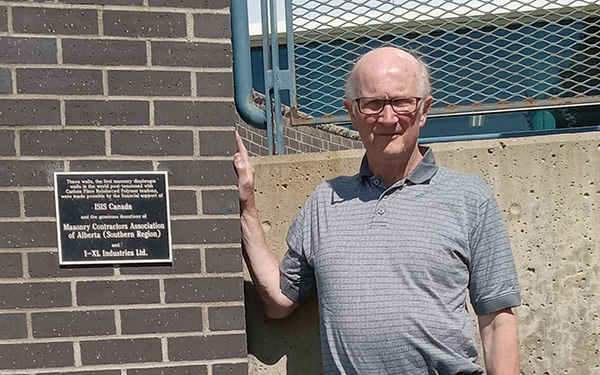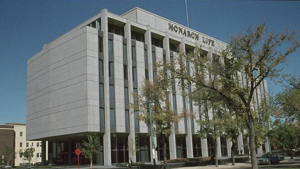There aren’t many Canadian scholars with the expertise to discuss the load-bearing properties of knee tissue in the morning and advise the government on the ability of the Parliament Buildings to withstand an earthquake in the afternoon.
In fact there is but one. For his remarkable accomplishments in two fields, biomedical engineering and civil engineering involving masonry, University of Calgary professor emeritus Dr. Nigel Shrive was one of 22 Canadians recognized as an Officer of the Order of Canada June 30.
Shrive’s citation recognized his “groundbreaking contributions to structural mechanics, notably his translational and multidisciplinary research in both biomedical and civil engineering.”
“I’m a bit of a technocrat in the sense that I just like trying to find out why things happen and why things work and how they work and so on,” said Shrive recently. “And in the process of doing that over the years, I’ve managed to explain several phenomena that were not properly or well understood.”
Shrive is a native of Sutton Coldfield in England and graduated from the University of Oxford in engineering in 1971 and philosophy engineering and natural science in 1974. He grew up with a love for traditional masonry but his first experience doing civil engineering work was disappointing, so he switched to biomedicine. The two fields are not vastly different, in his view.

“Structural mechanics is structural mechanics,” said Shrive. “You can apply it to a ligament, you can apply it to a meniscus, you can apply it to hard tissues. I can apply it to masonry just as easily as to any other material or structure.”
The Order of Canada nod, he said, “is very important because it recognizes that the work I have done has affected lots of people in different ways. It’s more a social recognition than a technical recognition.”
Shrive’s 92-page c.v. covers hundreds of research papers, awards, professional associations, scholarships and scholarly designations, in both disciplines. He said his career has been split 50:50 between biomedical and civil engineering, with the former tapering in recent years in part because two of his closest collaborators died.
Early on, as a doctoral candidate at Oxford, Shrive invented an artificial knee that has since been implanted in thousands of patients worldwide. Another important discovery was the importance of the meniscus as a primary load-bearing tissue. Surgeons previously thought it was minimally important.
“Now the whole regime has changed to, ‘oh, we better do what we can to save that,’ so a whole new industry and a whole new set of surgical techniques developed because suddenly they realized they needed to save that tissue rather than just pick it out,” said Shrive.
Shrive explained there was a similar gap in understanding. When he came to Canada, everyone was doing reinforced concrete, so his depth of knowledge for the traditions of master builders over the centuries set him apart.
“It’s amazing how little we really know about masonry. It was all built in the past by rule of thumb. The master builders learned how wide they could make things and how thick masonry had to be so it didn’t fall down and so on.
“From the practical point of view, the rule of thumb systems work. So in-plane shear walls don’t do too badly. They do develop cracks, but generally they stay intact. It’s out-of-plane problems where the masonry falls down because they shake in an earthquake.”
Shrive was attending a conference in Portugal when he was approached by a Canadian government procurement official asking him to consult on the resilience of the buildings on Parliament Hill. His analysis included a prediction that the masonry did not need major reinforcement to resist an earthquake. He was proven right when an earthquake hit Ottawa in 2010.
He has also consulted on the Prince of Wales Fort in Churchill, Man. and various heritage sites in Alberta.
Many of his awards are for excellence in teaching.
“One of the most important things for students is that they don’t just become parrots who regurgitate whatever you tell them. You want them to think, because problems are never exactly the same, especially when you get them into the research realm.”
Now semi-retired, Shrive still undertakes research in masonry, he supervises seven PhD students and he continues his long-time contributions to the Canadian Standards Association.
“I’m still keeping my mind going.”







Nigel is very self effacing as evidenced by many of his comments in this article. He has a first class mind, a thorough grasp of Structural Engineering principles and an ability to explain complex problems clearly and succinctly . He is a great teacher and researcher and a very worthy recipient of the Officer of the Order of Canada honour.